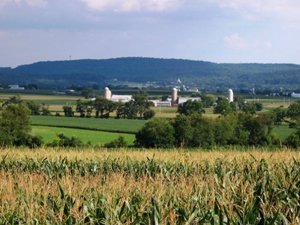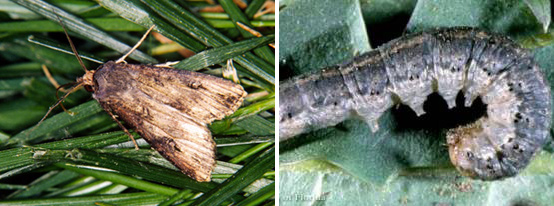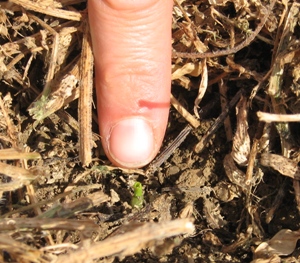Summary
Project title: On-farm management of cutworms in organic no-till corn
Investigator: Jeffrey Moyer, Rodale Institute Experimental Farm, Kutztown, PA
Project location: Kutztown, Pennsylvania
These study results are for the first two years (2008-2009) of a three-year field trial testing the efficacy of National Organic Program (NOP)-approved cutworm controls in an organic no-till corn system. The organic no-till system relies on leguminous cover crops rolled at corn planting to form a nitrogen-rich, weed-suppressive mat. While the rolled cover crop mat has shown excellent weed suppressive, erosion prevention, and energy- and time-saving capacities, it has also supported large cutworm populations and subsequent severe crop losses. Severe cutworm infestations reduced corn populations 34-67%. These losses noted at the Rodale Institute’s experimental farm, as well as by numerous farmers, motivated our study.
Black cutworm (Agrotis ipsilon) moths arrive in storm fronts in early spring and preferentially lay their eggs in lush cover crops, crop residue, or weeds. When temperatures exceed 50°F, the cutworm eggs begin to mature. Much like each corn variety requires a certain number of growing degree units (GDUs) to reach physiological maturity, developing cutworms also require a certain number of heat units to reach maturity (and their most damaging stage of development instars 3-5). From year to year, the timing of the peak influx, or biofix, of cutworm moth varies with the timing of weather front arrivals. Then from the biofix, heat units begin accumulating at different rates – faster for warm springs, slower for cool ones.
Cutworms are most damaging 312-430 heat units after the biofix. Generally, in eastern Pennsylvania, it takes about 30 days from the time of the biofix for the cutworm moth to mature to its developmental stage with greatest damage potential.



